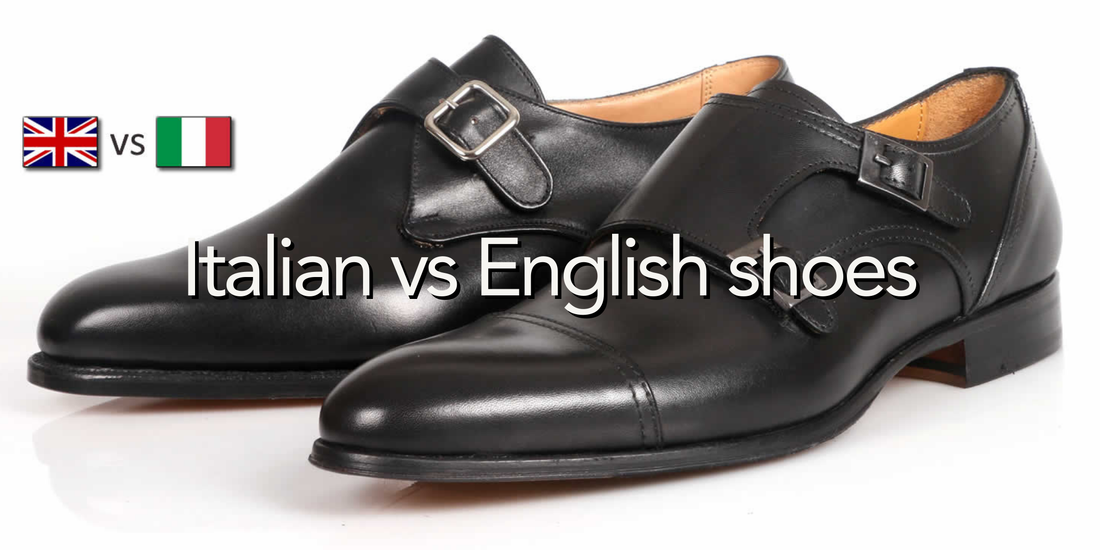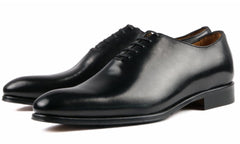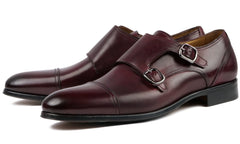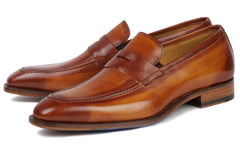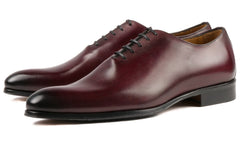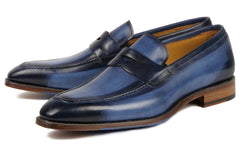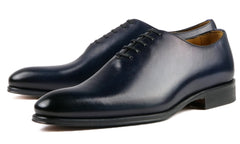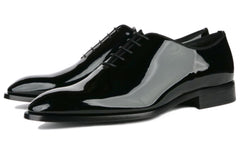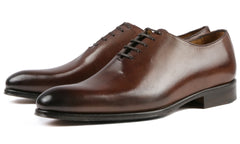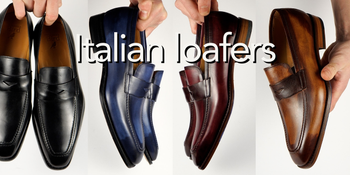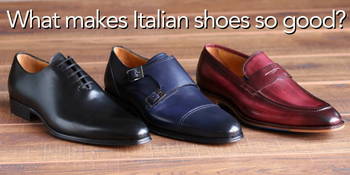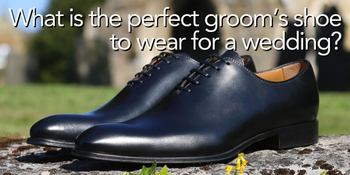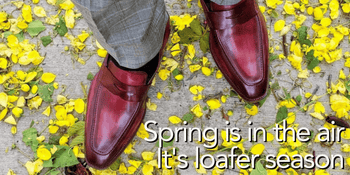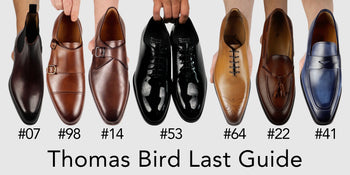Italian vs English shoes
People often ask which is better - Italian or English made shoes? Or they may be comparing Italian with US American made shoes. Here is our take on the subject.
Thomas Bird is a UK based, English company, so you may be wondering why our shoes are made in Italy. This article may help to answer that question.
Straight off, let's say there is no 'best' shoe. It depends on many factors - budget/cost, quality, design, construction, weight, colour - and what you actually want from an individual pair of shoes.
We love some English and some Italian made shoes, but just because a shoe is made in Italy or England is no guarantee that is a great shoe. Oh no.
There are some general differences in attitude and styling between the two countries, based in part on the history, tradition and culture of each.
The photo below shows two high quality shoes, an English made single buckle monk from Trickers, and our own Thomas Bird Italian made double buckle monk.

Maybe you prefer a single or double buckle, but let's not focus on that.
Both shoes use high quality calf leather. Both shoes have quality touches like stitched soles and full leather leather linings. In this example, both are black. So which is best and what are the differences?
Let's break it down into a few areas:
Weight
English shoes tend to be heavier than Italian shoes. In England and maybe the US, the weight of a shoe is sometimes seen as a sign of quality. Why is this? Well we might pass on the thoughts of our grandfathers on to our children. (My grandad had a lovely pair of solid English oxfords.) Maybe we think heavier shoes are better suited to our lovely rainy weather?
Italians don't think like that. They prefer a shoe that is lighter weight and more flexible and comfortable right out of the box, without a lot of breaking in. And in a warmer climate, a heavier shoe may make your feet too hot.
We weighed these two shoes just to see the difference. The English shoe weighs 521g and the Italian made shoe weighs 443g, so that's 156g difference for a pair.
Sole construction
Both shoes have stitched soles which can be easily replaced when worn, compared to cheaper shoe brands, that may have a glued or cemented sole that can't be replaced.
Quality English shoes tend to be goodyear welted. This is robust, solid and has a good reputation for keeping water out.
Italian quality shoes are usually made using a method called Blake stitching. This tends to make soles more flexible and comfortable than a goodyear welted sole. Historically blake stitching wasn't as good for keeping the wet out. But the modern use of man made polyester thread rather than cotton has helped stop moisture getting through. And certain Italian made styles will have a full or partial rubber sole which also helps to keep out the wet.
Styling/Shape
There are exceptions but Italian shoes tend to be a little longer and sleeker than their English cousins. It will vary depending on the designer and brand, but you can see a difference when comparing the two shoes below. The Thomas Bird Italian made monk on the left is a little longer around the toe.
This angle also helps to see the difference between the two soles. An Italian blake stitched sole is cut closer to the edge of the shoe. The English goodyear welted sole is more clearly seen from above. It's down to taste but Italians tend to like a neater, less obtrusive sole, the more discrete the better.

Materials/Leather/Colour
Both the shoes above use high quality materials, like full grain calf leather.
The Italian shoe industry is very large, with many tanneries and suppliers of leathers and components like the buckles seen above. Italian tanneries actually supply the leathers for many English shoe factories.
The English market, with a focus on a heavier shoe, like the stiffer, box leather. Usually leathers are pre-dyed at the tannery in black, brown, tan etc. This can limit choice and options.
Thomas Bird use an undyed calf leather which is then hand dyed when the shoes are made. This approach means that many more colour choices are possible, including green, plum, grey, purple and many others.
This is because colour and variety is more important with Italian shoe lovers - they conform much less to traditional blacks and browns.
Conclusion
So which is best, Italian or English?
We've looked at factors such as styling, weight, leathers and construction.
What is important to you? If you insist on a goodyear welted construction, you like a heavier weight and stiffer leather, then maybe English made is the way to go.
If you like a sleeker styling, with less weight, a more flexible sole and want a bigger choice of colour or patina, then Italian made may be the best choice.
So what do you want from your next pair of shoes? Both Italian and English made can be an excellent choice depending on your taste, the occasion and your sense of style.
What do you think?
Please add your thoughts or questions below.
See our complete range of Thomas Bird Italian made shoes.
Thanks for reading. We hope you enjoyed it.
If you have any comments please let us know below.
All the best till next time,
Thomas Bird
PS: If you liked this post, please share it.
And you can see lots more photos of our shoes and boots being worn on:
Instagram: instagram.com/thomasbirdshoes
Pinterest: pinterest.co.uk/thomasbirdshoes/pins

